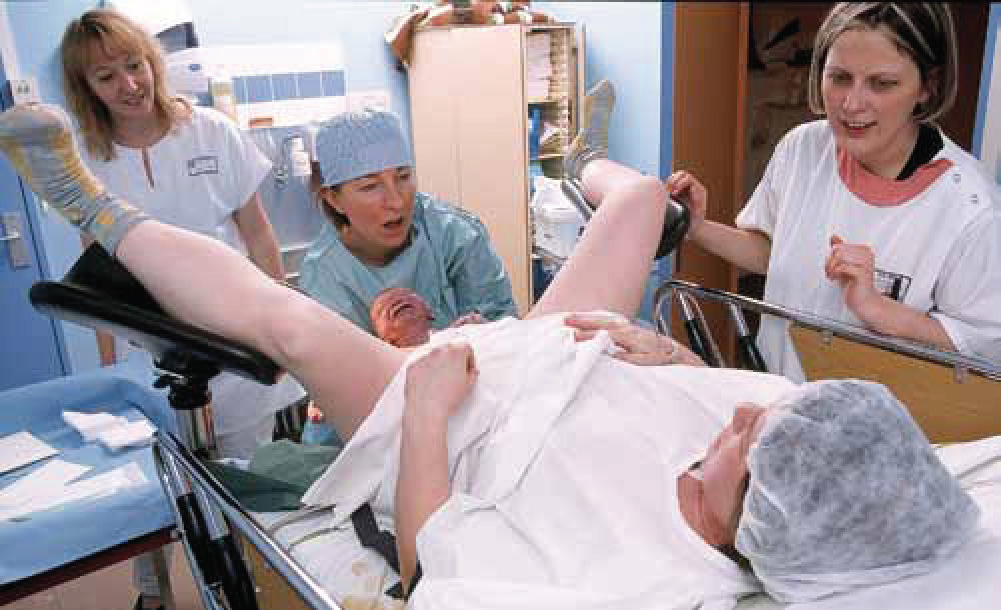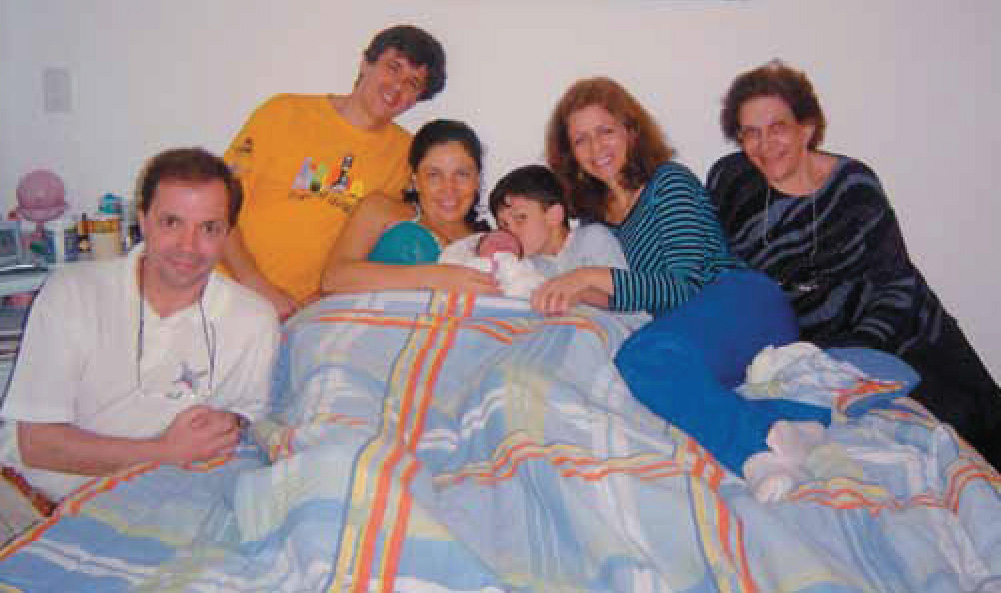The Birth Experience
Approximately 38 weeks after conception, contractions of the muscles of the uterus begin, initiating the birth of the baby. Typically, the baby has already contributed to the process by rotating itself into the normal head-down position. In addition, the maturing lungs of the fetus may release a protein that triggers the onset of labor. Uterine contractions, as well as the baby’s progress through the birth canal, are painful for the mother, so women in labor are often given pain-relieving drugs. Women who self-report a great deal of fear about childbirth earlier in their pregnancies are more likely to choose pain medications, such as epidurals, during the birth process (Haines et al., 2012). Although these drugs can help the mother get through childbirth more comfortably, they do not help her baby. Indeed, many obstetric medications slow labor, and prolonged labor increases the chance of fetal oxygen deprivation, which can result in brain damage.
67
Is birth as painful for the newborn as for the mother? Actually, there is good reason to believe that birth is not particularly painful for the baby. Compare how much pain you feel when you pinch and pull on a piece of skin on your forearm versus when you wrap your hand around your forearm and squeeze as tightly as you can. The stretching is painful, but the squeezing is not. The mother’s pain comes from her tissues being greatly stretched, but the baby experiences squeezing. Hence, the experiences of the two participants are not really comparable (Maurer & Maurer, 1988). Childbirth programs designed to prevent birth from being painful and traumatic for newborns are probably based on faulty premises.
Furthermore, the squeezing that the fetus experiences during birth serves several important functions. First, it temporarily reduces the overall size of the fetus’s disproportionately large head, allowing it to pass safely through the mother’s pelvic bones. This is possible because the skull is composed of separate plates that can overlap one another slightly during birth (see Figure 2.19). The squeezing of the fetus’s head during birth also stimulates the production of hormones that help the fetus withstand mild oxygen deprivation during birth and to regulate breathing after birth. The squeezing of the fetus’s body also forces amniotic fluid out of the lungs, in preparation for the newborn’s first, crucial gasp of air (Lagercrantz & Slotkin, 1986; Nathanielsz, 1994). This first breath usually comes by way of the birth cry, which is a very efficient mechanism for jump-starting respiration: a strong cry not only obtains some essential oxygen but also forces open the small air sacs in the lungs, making subsequent breaths easier. (An important disadvantage of cesarean deliveries is that surgical removal from the womb deprives the fetus of the squeezing action of a normal delivery, increasing the likelihood of its experiencing respiratory problems as a newborn.)

68
Diversity of Childbirth Practices
Although the biological aspects of birth are pretty much the same everywhere, childbirth practices vary enormously. As with many human behaviors, what is considered a normal and desirable birth custom in one society may seem strange or deviant—or even dangerous—in another.
All cultures pursue the dual goals of safeguarding the survival and health of both the mother and the baby and ensuring the social integration of the new person. Groups differ, however, regarding the relative importance they give to these goals. An expectant mother on the South Pacific island of Bali assumes that her husband and other kin, along with any children she may already have, will all want to be present at the joyous occasion of the birth of a new child. Her female relatives, as well as a midwife, actively help her throughout the birth, which occurs in her home. Having already been present at many births, the Balinese woman knows what to expect from childbirth, even when it is her first child (Diener, 2000).
A very different scenario has been the tradition in the United States, where the woman in labor usually withdraws almost totally from her everyday life. In most cases, she enters a hospital to give birth, typically attended by a small group of family or close friends. The birth is supervised by a variety of medical personnel, most of whom are strangers. Unlike her Balinese counterpart, the first-time U.S. mother has probably never witnessed a birth, so she may not have very realistic expectations about the birth process. Also, unlike her counterparts in most societies, a U.S. woman in labor has a 33% chance of having a surgical delivery by cesarean—a rate that has steadily increased in the United States over the past 2 decades (Martin et al., 2012). There are a number of reasons for the ever higher rate of surgical deliveries, including a vastly increased rate of multiple births (discussed below), scheduling convenience for the physician and/or the parents, and physicians’ attempts to decrease risk of lawsuits concerning medical malpractice should problems arise from a vaginal birth (e.g., Yang et al., 2009).
Underlying the Balinese approach to childbirth is great emphasis on the social goal of immediately integrating the newborn into the family and community—hence the presence of many kin and friends to support mother and baby. In contrast, modern Western groups have elevated the physical health of the mother and newborn above all other concerns. The belief that childbirth is safer in a hospital setting outweighs the resulting social isolation of mother and baby.
The practices of both societies have changed to some degree. In the United States, the social dimensions of birth are increasingly recognized by doctors and hospitals, which often now employ certified nurse-midwives as alternative practitioners for expectant parents who prefer a less medicalized birth plan. As in Bali, various family members—sometimes even including the parents’ other children—are encouraged to be present to support the laboring mother and to share a family experience. Another increasingly common practice in the United States is the use of doulas, individuals trained to assist women in terms of both emotional and physical comfort during labor and delivery. This shift has been accompanied by more moderate use of delivery drugs, thereby enhancing the woman’s participation in childbirth and her ability to interact with her newborn. In addition, many expectant parents attend childbirth education classes, where they learn some of what their Balinese counterparts pick up through routine attendance at births. Social support is a key component of these programs; the pregnant woman’s husband or partner, or some other supportive person, is trained to assist her during the birth. Such childbirth programs are generally beneficial (Lindell, 1988), and obstetricians routinely advise expectant couples to enroll in them. At the same time that these changes are occurring in the United States, Western medical practices are increasingly adopted in traditional, nonindustrialized societies like Bali, in an effort to improve newborn survival rates.
69


review:
Research on the birth process has revealed that many aspects of the experience of being born, including squeezing in the birth canal, have adaptive value and increase the likelihood of survival for the newborn. Although cultural groups differ in their beliefs and practices related to childbirth, these differences are decreasing as expectant mothers gain access to more diverse birthing options.
70